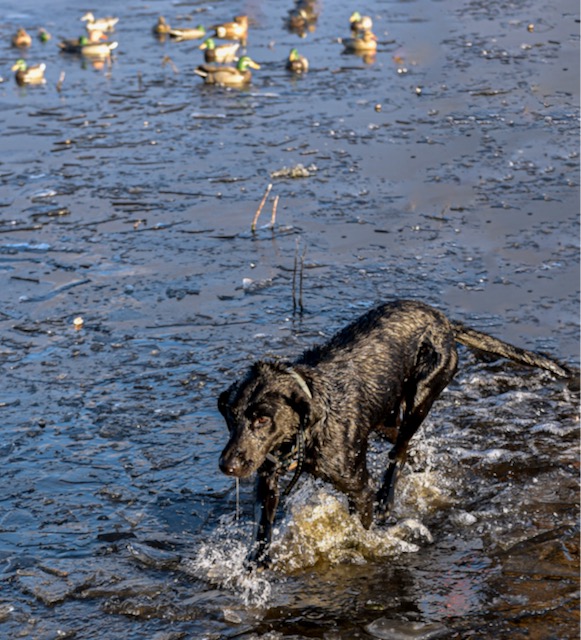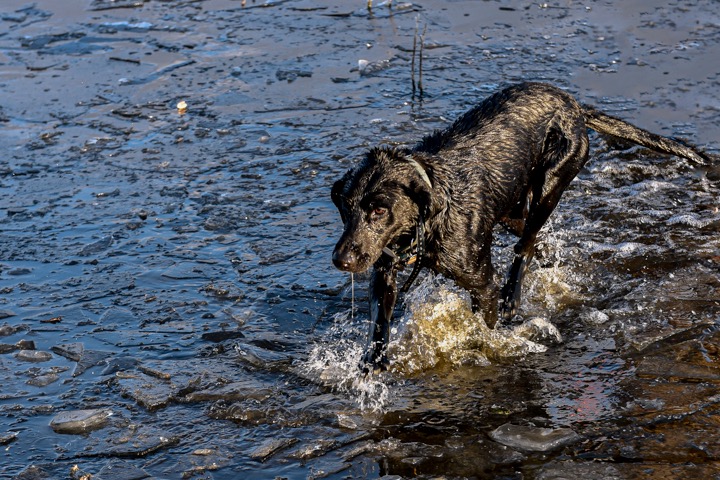ON THIN ICE
Keep a careful eye on your four-legged friend around thin ice
Advertisement
Late fall offers outstanding bird-hunting opportunities, in part because the cold keeps fair-weather hunters indoors, easing the hunting pressure. And while the frigid temperatures might not be of concern to most hunting dogs, the threat of thin ice is another matter.

#1 CHECK THE ICE
Advertisement
To safely travel across ice on foot, it should be at least 10 centimetres thick. Sure, thinner ice can support a dog’s weight, but it can still be dangerous due to uneven freezing and currents—and even more treacherous over deeper water. If your dog breaks through, the ice will likely be too thin for you to rescue it without also falling in.
#2 BE PREPARED
Avoiding thin ice is the best way to stay safe, but that’s not always possible. Have a plan at the ready in case your dog does fall through, without jeopardizing your own safety. In shallower water, use your weight to break a path out to your floundering friend or toss out a line the dog can bite on to. If you must go onto the ice, ensure you have a safety line tied to shore. Distribute your weight as widely as possible, and approach the dog from the direction it was travelling. Once rescued, dry the dog off and gently warm it in a vehicle or indoors.
Advertisement
#3 AVOID HAZARDS
It’s no different for dogs when it comes to spraining and straining soft tissue after slipping on ice. Hard and sharp fractured edges can also cut your dog’s unprotected paws, front shins, chest and head. And a dog breaking through a skiff of ice to make a retrieve will almost certainly bruise itself. Then there’s the threat of hypothermia—you may want to dress your dog in a neoprene vest to protect its chest and add an extra layer of warmth.

